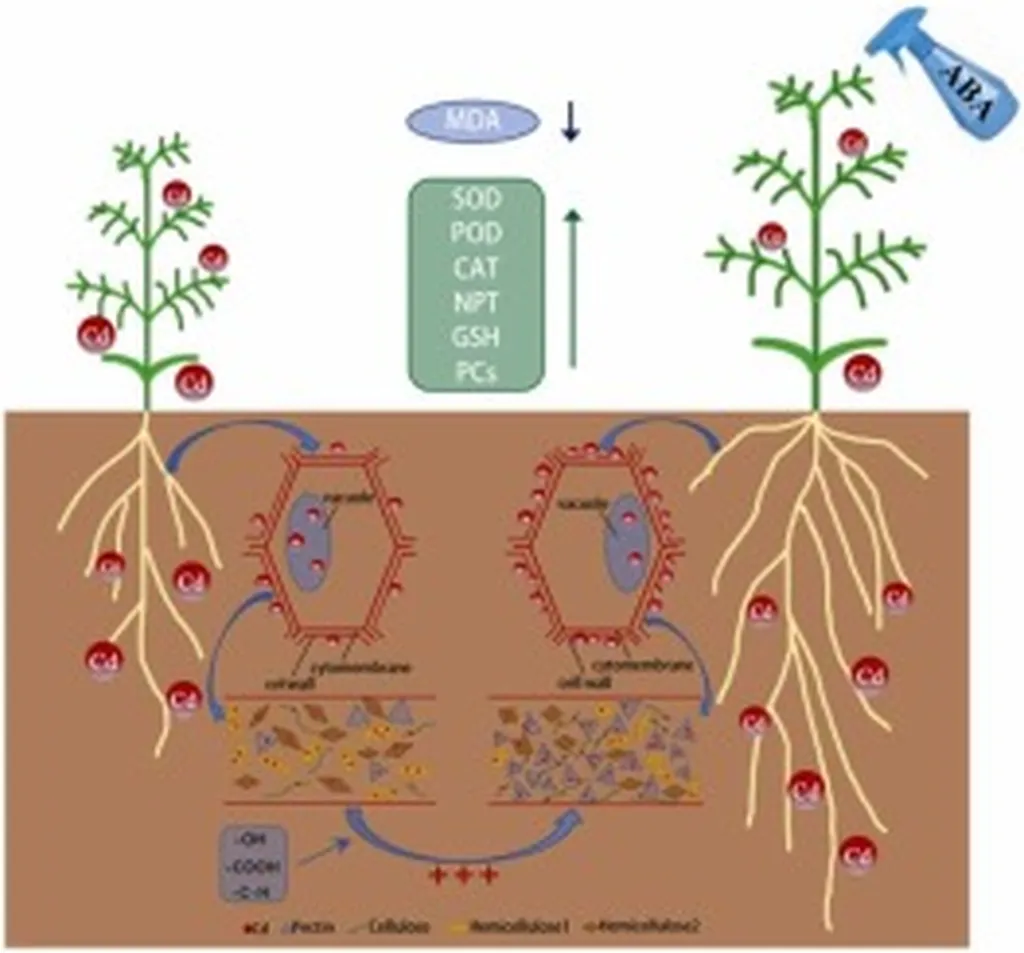In the heart of China’s rice paddies, a silent threat lurks beneath the surface: cadmium (Cd), a heavy metal that poses significant risks to both crops and human health. As rice plants absorb Cd from contaminated soil, the metal makes its way up the food chain, potentially endangering those who consume it. However, a recent study published in the *Journal of Integrative Agriculture* (《农业机械学报》), led by Zhijun Xu of Hunan Agricultural University, offers a glimmer of hope in the form of a naturally occurring plant hormone called abscisic acid (ABA).
Xu and his team discovered that ABA plays a crucial role in reducing Cd accumulation in rice plants. By applying ABA externally, they observed a significant decrease in Cd levels in both the shoots and roots of the plants. “The application of exogenous ABA significantly reduced Cd accumulation in rice plants,” Xu explained, highlighting the potential of this hormone as a protective agent against Cd toxicity.
The study revealed that ABA works by regulating Cd transport and cell wall sequestration, effectively trapping the heavy metal within the plant’s cell walls and preventing it from spreading to other parts of the plant. This process not only reduces Cd accumulation but also mitigates its toxic effects. The researchers found that ABA treatment led to increased activity of the antioxidant enzyme ascorbate peroxidase (APX) and a decrease in hydrogen peroxide (H2O2) content, both of which contribute to enhanced Cd tolerance in rice plants.
One of the most promising findings of the study was the impact of ABA on Cd accumulation in rice grains. By spraying ABA on the leaves during the grain-filling stage, the researchers were able to significantly reduce Cd levels in the grains. This discovery has profound implications for the agricultural industry, as it offers a practical solution for coping with Cd pollution in farmlands and ensuring the safety of rice crops.
The study also shed light on the role of the ABA signaling factor OsABI5. Mutations in this gene resulted in a significant increase in Cd accumulation in the shoots, underscoring the importance of ABA signaling in the plant’s response to Cd stress.
As the world grapples with the challenges of heavy metal pollution in agriculture, this research provides a valuable insight into the mechanisms underlying Cd uptake and transport in rice plants. By harnessing the power of ABA, farmers and agricultural scientists may be able to develop innovative strategies for mitigating Cd toxicity and safeguarding the quality of our food supply.
The findings of this study not only advance our understanding of the complex interplay between plants and heavy metals but also pave the way for future developments in the field of agritech. As Xu and his team continue to explore the potential of ABA in combating Cd pollution, the agricultural industry stands to benefit from their groundbreaking research.

